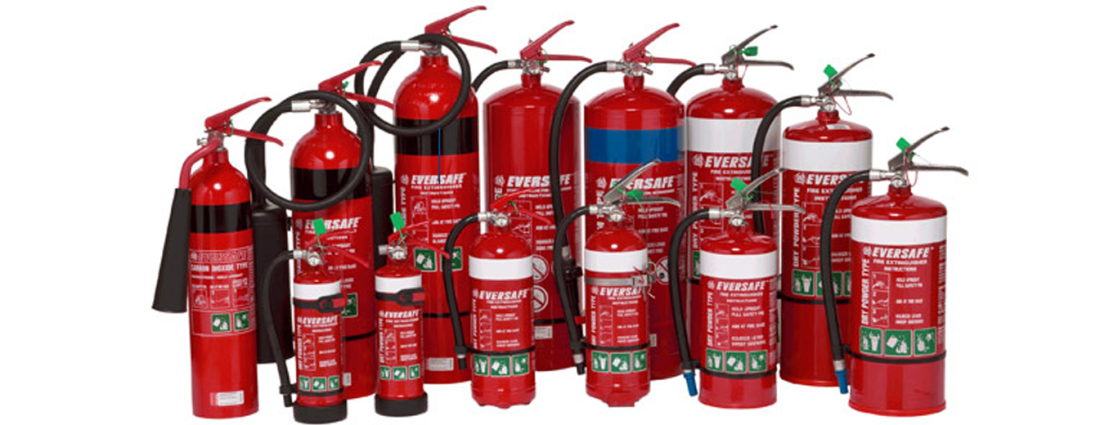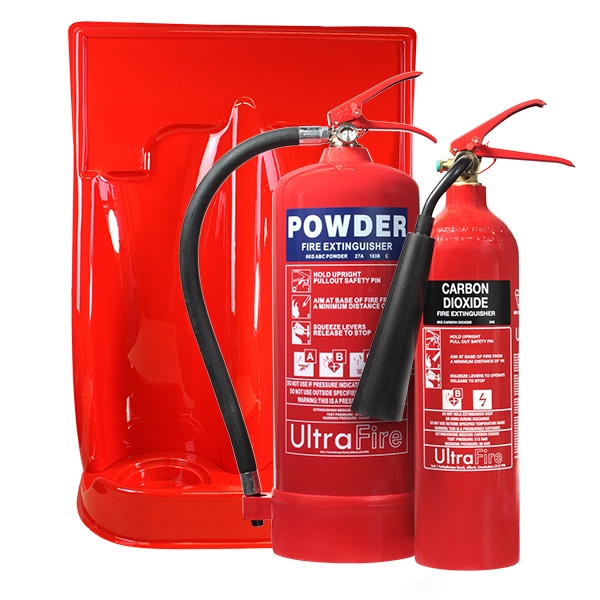The Regulatory Reform Order at the UK puts a duty of care on which it describes as the ‘Responsible Person’ in every place of work to ensure there’s sufficient supply of fire fighting gear and this equipment is kept in good working order.
The Responsible Person is the individual in control of the work premises, typically the business owner or manager. This obligation may be shared in assumptions used by numerous organisations.
To put it differently, providing proper fire extinguishers on your area of work isn’t an optional extra, you’re legally obliged to perform it. This guide should allow you to check the fire extinguishers you are the ideal kind and that you’ve got enough of these in the right places.
Bear in mind that getting fire extinguishers in your office isn’t so that individuals are able to stick around and battle a fire, but in the event they are necessary to simply exit the building safely.
Types of Fire Extinguisher – Colour Coding
Colour coding of fire extinguishers in the UK changed some time back to bring the UK in line with other European Union states. Moving from a system in which the whole fire extinguisher has been a particular color to a demonstrating a block of color was viewed by some as a backward step. The UK had an extremely effective system with fire extinguishers readily recognizable, but it had been viewed as easier to fall down to EU normal that attempt to attract the rest of the states around UK standard.
The color coding system today is that almost all fire extinguishers are reddish in color, using a block of color corresponding to the extinguisher type only over the operating instructions. The color codes are as follows:
Water: crimson
Carbon Dioxide: Dark
Foam: lotion
Dry Powder: gloomy
Wet Chemical: yellowish
Want to read more about fire extinguishers click fire extinguisher inspection tags nyc
What Each Different Type of Fire Extinguisher Is Used For
Water Fire Extinguishers
These fire extinguishers are best for use on fires involving ordinary materials like wood, paper and materials. They generate a steady jet of water which may be directed to the flame. These aren’t appropriate for using on flames on live electrical equipment or burning fat or oil.

Carbon Dioxide Fire Extinguishers
These fire extinguishers are thought for scenarios involving live electrical dangers or flammable liquids. Since they’re only producing a gasoline that they cause very little harm and so are great to be used on printers, photocopiers faxes, etc.. Even though they may be utilized perfectly on any electric equipment, they can’t be guaranteed to not cause any harm whatsoever to delicate electronics and IT gear.
Foam Fire Extinguishers
These fire extinguishers are secure on precisely the exact same sort of materials which you would use a water dispenser, and additionally may be used on flammable liquids like gas, gas, solvents and spirits. They create a foam that seals in vapours to avoid the flame re-igniting. These extinguishers aren’t, however, appropriate to be used on deep fat fryers.
Dry Powder Fire Extinguishers
These are a flexible fire extinguisher, which may be used on fires with flammable gases like butane and propane. They’re also secure on electric fires, but are most likely to cause more harm than the usual Carbon Dioxide extinguisher. Because of the character of this fine powder created, they’re not suggested to be used in confined spaces or by people with breathing issues.
Wet Chemical Fire Extinguishers
These fire extinguishers are the only kind that are acceptable for use on burning oil for example cooking, fat or lard. The extinguisher generates a gentle spray that responds to seal the surface of burning fat or oil to stop it re-igniting.
Halon Fire Extinguishers
Halon fire extinguishers are banned from the UK because, 2002, besides very limited exceptional conditions. The main reason behind the ban is that the critical ozone depleting property of these inert gases that they discharge in the atmosphere. In case you have some halon extinguishers on your area of work you want to organize for the secure disposal of those.
Types of Fire Extinguisher – How Many Should I Have?
For general work places such as offices, stores and similar regions having no specific hazards, you need to be supplying water fire extinguishers. Concerning the amount you want to provide, the official need is that you just need one for each 200 square yards of floor area, subject to a minimum of two fire extinguishers on each floor.
Where Should The Fire Extinguishers Be Located?
Unless an extinguisher has been supplied to take care of a particular risk, they need to be located at key points in your emergency escape routes. Key locations are adjacent to fire exit doors, close to the exit out of a floor or space, etc..
If an extinguisher is meant to cover a specific risk, like a sexy fat fryer at a kitchen, then it clearly has to be sited from the area near to the danger it pertains to.
The very best way of repairing would be to attach your fire into a wall with a unique bracket. This puts them in a fantastic height for accessibility and visibility in addition to offering a level of protection from being knocked over or moved. Where this isn’t feasible, you can acquire free standing units which the fire extinguisher sits. This helps to provide them a much more permanent position than when they were only by themselves and leaves them less inclined to be transferred or damaged.
Maintenance And Testing of Fire Extinguishers
Part of this obligation about the Responsible Person will be to correctly maintain all of your fire fighting equipment, as it might also not be there if it’s not in working order. The very best method to guarantee this is to prepare a maintenance contract with a professional business to inspect your extinguishers at least a year. This will then provide you with documentary evidence that you’ve taken appropriate precautions, if anything go wrong at the future.
In between reviews you should execute your regular tests. These can just entail recording the fact you’ve assessed that each extinguisher is in its own appropriate place and hasn’t yet been discharged or ruined. You should maintain a record of the in a log book in the event the Fire Authority want to scrutinize it. Again the documentary evidence of your reviews might be rather helpful.
